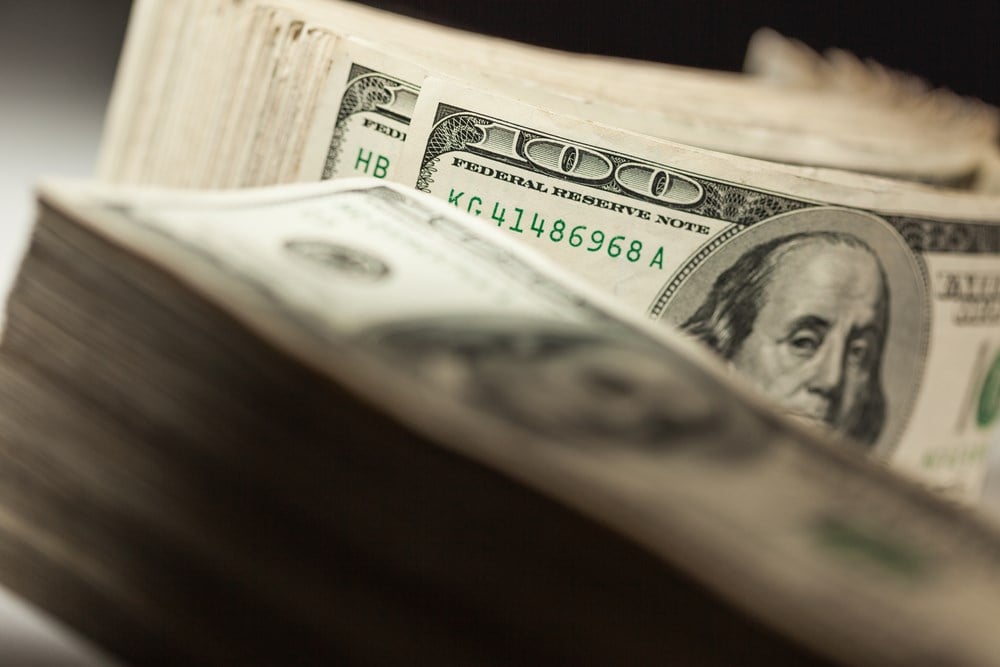
The phrase “cash is king” can mean several different things depending on perspective.
To a local restaurant that only accepts cash payments, ‘cash is king.’ To investors in an overheated stock market, a ‘cash is king’ strategy keeps money on the sidelines in anticipation of cheaper prices.
From the perspective of corporate America, maintaining large cash balances on the books can also make cash royalty. It affords a business more flexibility to either: 1) pay its bills and debt obligations, 2) invest in growth projects, 3) enhance shareholder value through dividend and buybacks — or all of the above.
These are attractive attributes for stock investors because they signal fundamental quality. Companies with piles of cash on the balance sheet typically exhibit financial strength and stability that translate to long-term stock appreciation.
Investors have many choices when it comes to cash-rich public companies. Since they are in the business of receiving and lending money, banks naturally have some of the highest cash hoards. Technology leaders like Alphabet and Microsoft also sit on over $100 billion in greenbacks.
But with the tech and financial sectors notoriously volatile, cash-rich consumer staples can offer another layer of stability. The resilient nature of these three companies — and their current $10 billion-plus cash positions — have been spreading the wealth to investors for decades.
What Is Costco’s Return Over The Past Decade?
Costco Wholesale Corporation (NASDAQ: COST) has produced a 19.4% annualized return over the last 10 years. The warehouse club operator has $13.7 billion in total cash representing roughly 6% of its market value, a mark of stability.
The stock fits the mold of a defensive investment because essential goods generate reliable cash flow throughout the economic cycle. Around 53% of Costco sales come from fresh foods and sundries. Another 20% comes from essential ‘side-hustle’ business like gasoline and pharmacy services. This leaves only 27% of sales going toward discretionary items like electronics and clothing.
Costco’s cash balance has steadily increased over the last few years because of same-store sales growth, new store openings and membership renewals. Going forward, the growth recipe and the cash trend will likely be the same. Management plans to open 24 stores this year with a continued focus on international expansion.
The company does have $9.0 billion in debt and operating lease liabilities but compared to the cash level, this makes it very financially fit. The dividend yield is modest (0.8%) and the share repurchase activity light, so consider these bonuses to an already stable investment profile.
What Is Walmart’s Total Cash Balance?
Walmart Inc. (NYSE: WMT) investors benefit from essentially the same dynamics as Costco. With its Sam’s Club subsidiary accounting for around 14% of revenue, the remainder comes from roughly 10,500 U.S. and international stores — and e-commerce. In the U.S., groceries and health and wellness products together represent about 70% of total sales.
The stock’s 10-year annualized return is 10.1%, which is below that of the S&P 500 by about 2% — but what Walmart lacks in return, it makes up for in stability. The world’s largest retailer currently holds $10.6 billion in cash. Last quarter (fiscal Q1), it hauled in $4.6 billion in cash from operations. Inventories detracted much less than they did in the prior-year quarter.
Unfortunately, high food prices are eating into margins and shoppers’ ability to spend on more profitable general merchandise. This has Wall Street forecasting a slight dip in fiscal 2024 earnings. But expectations of moderating food inflation has analysts anticipating double-digit profit growth in fiscal 2025.
Walmart’s fiscal 2025 P/E ratio of 23x is well below its 34x five-year historical average. The potential for significant multiple expansion, an active buyback program and a 1.4% dividend make it a value triple-threat.
What Makes Coca-Cola a Good Value Stock?
The Coca-Cola Company (NYSE: KO) has generated an 8.4% annualized total return over the last 10 years. Its building $14.3 billion cash balance stems from the fact that more than two billion servings of the company’s sodas, juices, teas and coffees are consumed daily across over 200 countries. Last year, this amounted to $43 billion in sales and $2.48 of EPS, both of which increased from 2021.
As usual, single-digit growth is expected over the next several years. Management is targeting 4% to 6% sales growth and 7% to 9% profit growth long-term. How will profit growth exceed sales growth?
Coke is expected to lean on its non-carbonated beverages, which are finding increasing favor with health-minded consumers and generate higher margins. A focus on faster-growing emerging markets like China and India, as well as productivity improvements, will also be a big part of the earnings story.
Aside from the steady growth that comes from selling popular beverages, a big component of the total return is the dividend. And when you take in cash like its water, that dividend can be increased over time — in Coke’s case, each of the last 62 years. The stock currently offers a 3.0% dividend, consistent buybacks — and the comfort of co-investing with Warren Buffett.













